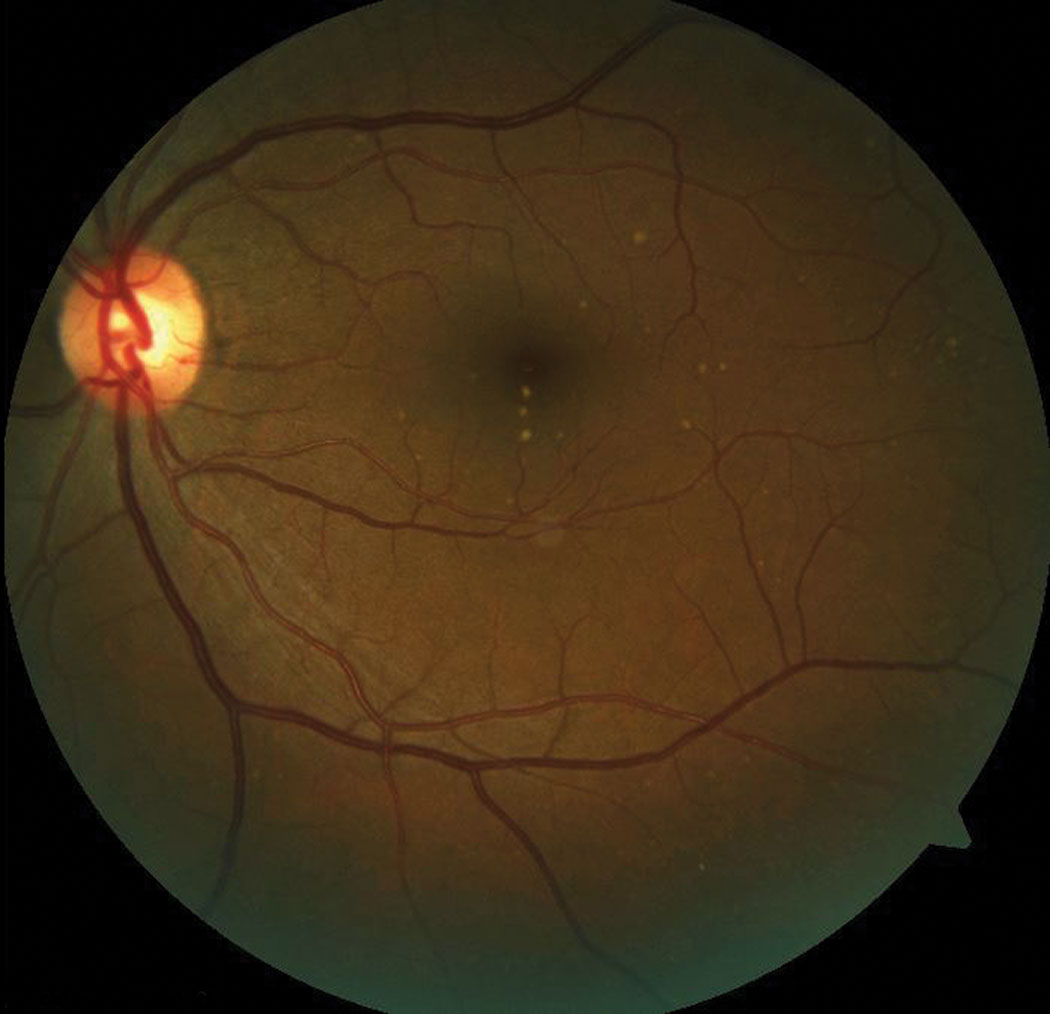 |
|
The presence of central drusen was associated with a high genetic susceptibility to AMD. Photo: Bisant A. Labib, OD. Click image to enlarge. |
Several classifications have been proposed for early AMD, but few put much emphasis on drusen location. Rather, they often define the early stage of the condition as the presence of drusen and pigmentary abnormalities in the ETDRS grid (3000μm from the foveal center). Researchers from Bordeaux, France explored the hypothesis that drusen location could be strongly linked with known AMD risk factors and possibly provide a better stratification of early AMD, which could constitute a powerful and easy biomarker for future epidemiologic studies. Their analysis of an elderly French population revealed that central drusen location was strongly associated with known AMD risk factors.
The study, published in Acta Ophthalmologica, assessed the associations of drusen location (central or pericentral) with known AMD risks (various systemic, ocular and genetic factors) and with the incidence of late AMD to identify more specific early abnormalities associated with an increased risk of late AMD. On retinal photographs, the researchers defined central drusen as at least one soft drusen (>63μm) within 500μm from fovea and pericentral drusen as at least one 500µm to 3000μm from fovea, in the absence of any central drusen. Late AMD (atrophic and/or neovascular) was diagnosed using multimodal imaging. In total, 481 eyes were included in the analysis: 160 central and 321 pericentral. The researchers believed that they obtained a good follow-up rate (81%), with a six-year follow-up and three time point evaluations.
In multivariate logistic regression, central drusen were associated with smoking (odds ratio; OR: 2.95 for smoking more than 20 pack-years), high-density lipoprotein cholesterol (OR: 1.57 for one standard deviation increase), pulse pressure (OR: 0.77 for one SD increase), Age-Related Maculopathy Susceptibility 2 (ARMS2) genetic risk score (OR: 1.42) and complement genetic risk score (OR: 1.55). The central location of drusen (at baseline or during the follow-up) was associated with a 4.41-fold increased risk for an incident late AMD.
“Characterization of the central location of drusen could modify the classification of early and intermediate AMD,” the team concluded in their paper. “A more accurate classification of the early stages of the disease will help identify AMD risk factors and predict evolution to the late stage of disease, providing a better identification of high-risk patients.”
Sénéclauze A, Le Goff M, Cougnard-Grégoire A, et al. Associations of drusen location with risk factors and incidence of late age-related macular degeneration in the Alienor study. Acta Ophthalmol. January 26, 2024. [Epub ahead of print]. |

